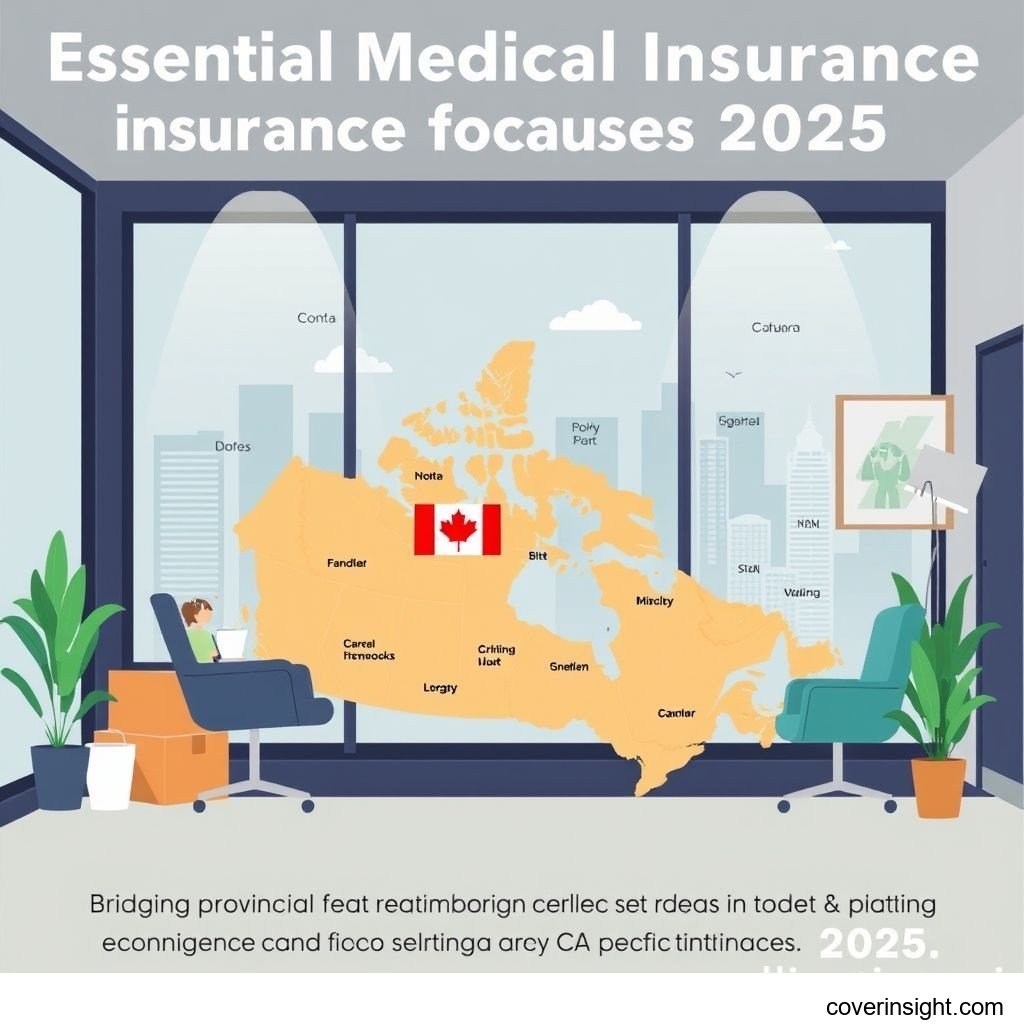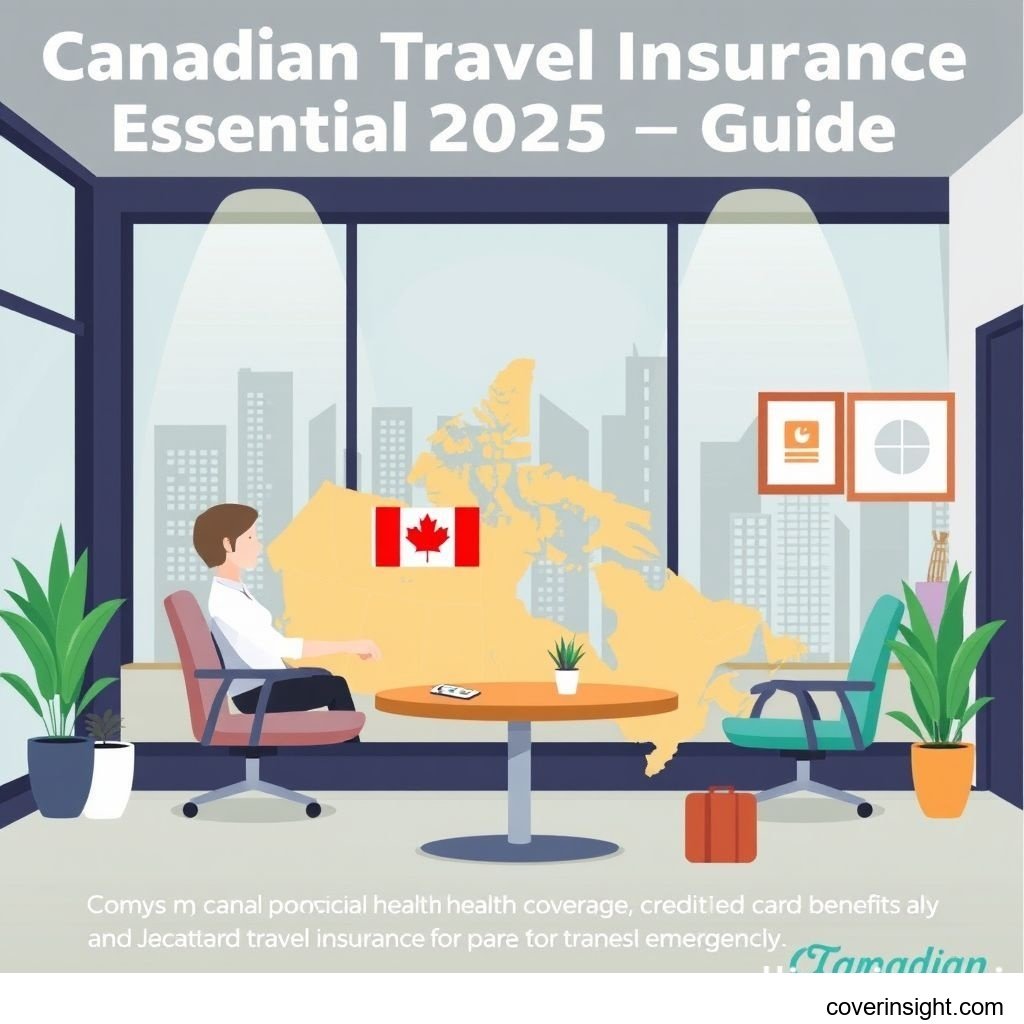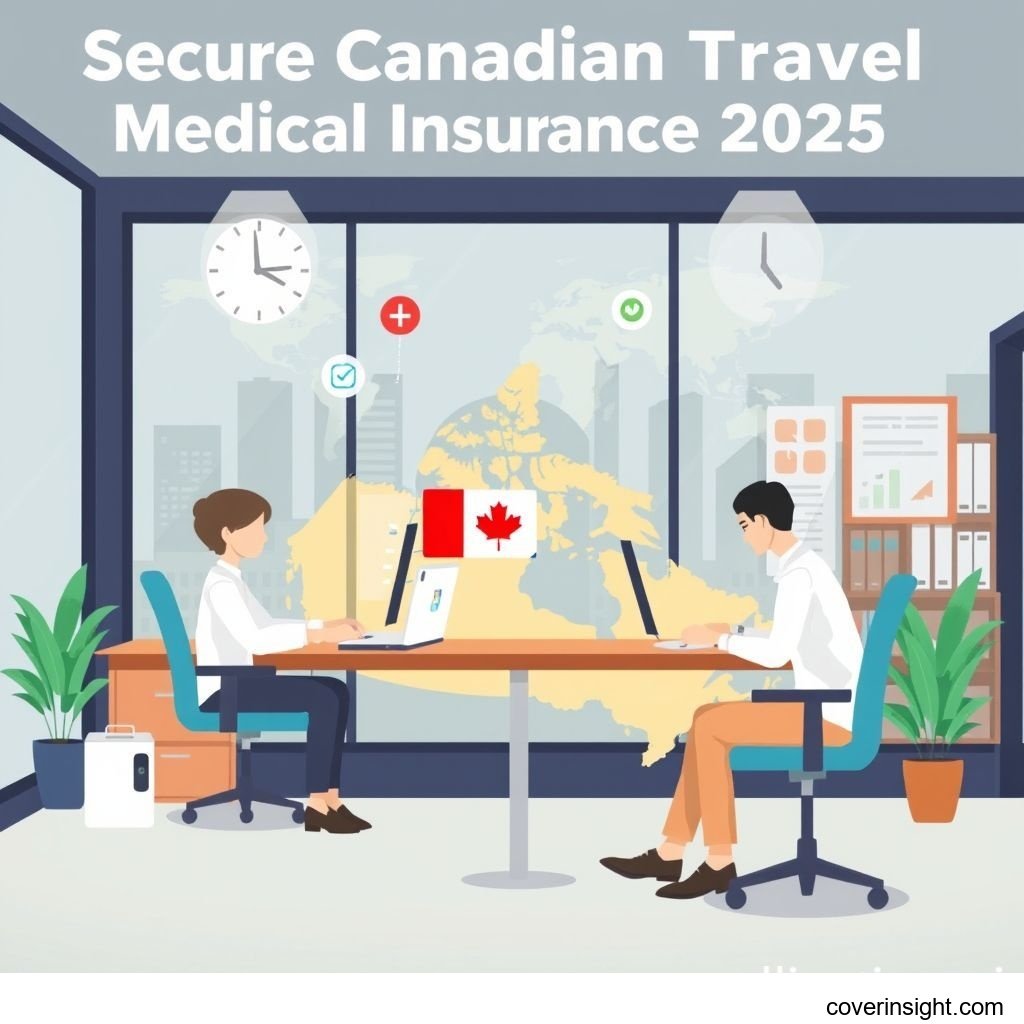Essential Medical Travel Insurance for Canadians 2025
Introduction
As Canadians increasingly plan international journeys in 2025, understanding the critical role of robust medical insurance for international travel has never been more vital. While Canada boasts an excellent healthcare system, provincial health plans offer extremely limited, if any, coverage once you step outside the country's borders. An unexpected illness or accident abroad can lead to astronomical medical bills, potentially transforming a dream vacation into a financial nightmare. This comprehensive guide will navigate the complexities of obtaining essential medical insurance for international travel, ensuring you're well-prepared for any health-related challenges on your global adventures.
Understanding Comprehensive Medical Insurance for International Travel
Venturing beyond Canada’s borders means leaving the familiar security of your provincial healthcare plan behind. Many Canadians mistakenly believe their government health insurance will cover them globally. The reality is far different: provincial plans typically cover only a fraction of emergency medical costs incurred outside Canada, and often only reimburse at provincial rates, which are significantly lower than international private hospital fees. This gap underscores why dedicated medical insurance for international travel is not just an option, but a necessity. It acts as a financial safeguard, protecting you from the substantial expenses of foreign medical care, which can easily run into tens or hundreds of thousands of dollars for even routine emergencies like a broken bone or a severe infection. Without this specialized coverage, you bear the full brunt of these costs, including ambulance services, hospital stays, surgeries, and emergency repatriation.
Coverage Details for Your Peace of Mind
Understanding what your medical insurance for international travel policy covers, and, equally important, what it does not, is paramount. Policies vary significantly, so a thorough review of the terms and conditions is always recommended.
What’s Included
A comprehensive policy for medical insurance for international travel typically covers a wide array of emergency medical services designed to address unforeseen health events abroad. Key inclusions generally feature:
-
Emergency Hospitalization: Costs associated with hospital stays, including room and board, nursing care, and physician fees.
-
Doctor and Specialist Visits: Coverage for consultations with general practitioners or specialists for acute illnesses or injuries.
-
Emergency Medical Treatment: Expenses for sudden and unexpected medical conditions requiring immediate attention.
-
Prescription Medications: Costs for drugs dispensed as part of an emergency medical treatment.
-
Ambulance Services: Transportation to the nearest appropriate medical facility.
-
Emergency Dental Care: Treatment for accidental injury to natural teeth or sudden onset of dental pain.
-
Medical Repatriation: The cost of transporting you back to Canada for medical care or, in tragic circumstances, the repatriation of remains.
-
Accidental Death and Dismemberment: A lump sum payment in the event of severe injury or death.
Common Exclusions
While policies offer robust protection, it's crucial to be aware of standard exclusions. These are circumstances or conditions for which your medical insurance for international travel will not provide coverage:
-
Pre-existing Conditions: Often, unstable or undeclared pre-existing medical conditions are excluded, especially if they haven't been stable for a defined period (e.g., 90 or 180 days).
-
Elective Procedures: Non-emergency treatments, cosmetic surgery, or scheduled medical procedures.
-
Extreme Sports: Participation in high-risk activities like bungee jumping, skydiving, or mountain climbing, unless specific add-on coverage is purchased.
-
Alcohol or Drug-Related Incidents: Injuries or illnesses sustained while under the influence.
-
Acts of War or Terrorism: Medical events occurring in areas declared unsafe due to conflict.
-
Travel Against Government Advisories: Visiting regions for which the Canadian government has issued a "avoid all travel" advisory.
-
Childbirth: Routine pregnancy care or delivery, though emergency complications are often covered.
The Importance of Medical Evacuation Limits
One of the most critical, yet often overlooked, aspects of any travel insurance policy concerns medical evacuation limits. Medical evacuation refers to the emergency transportation of a sick or injured person from the location of incident to the nearest appropriate medical facility, or back to their home country for ongoing care. The costs associated with air ambulance services can be astronomical, easily reaching six figures depending on the distance and medical care required during transit. For instance, an air ambulance from a remote part of Asia to Canada could cost well over $100,000. It is absolutely essential to scrutinize the medical evacuation limits specified in your policy. Ensure these limits are sufficient to cover potential transport from your furthest destination, not just to a local hospital but potentially back home. Adequate medical evacuation limits provide a vital safety net, preventing devastating out-of-pocket expenses for life-saving transport. This is especially pertinent for those traveling to remote locations or developing countries where local medical facilities may not meet Canadian standards.
Cost Analysis and Saving Strategies
The cost of medical insurance for international travel varies widely, influenced by several key factors. Understanding these elements can help you make informed decisions and find the most suitable policy without overpaying.
Price Factors
Premiums for medical insurance for international travel are not one-size-fits-all. Several variables contribute to the final price:
-
Age: Older travellers typically pay higher premiums due to an increased risk of medical emergencies.
-
Trip Duration: Longer trips naturally incur higher costs, as the period of potential risk is extended.
-
Destination: Travel to countries with high medical costs (e.g., USA) or regions with limited medical infrastructure may result in higher premiums.
-
Health Status: Any pre-existing medical conditions, even if stable and covered, can impact the premium. A comprehensive medical questionnaire is usually required.
-
Coverage Amount: Higher overall coverage limits and lower deductibles will increase the premium.
-
Type of Policy: Single-trip policies are priced per trip, while multi-trip annual plans may offer better value for frequent travellers.
-
Add-ons: Coverage for adventure sports, specific equipment, or enhanced medical evacuation limits will add to the base cost.
Saving Tips
While securing adequate coverage is crucial, there are smart ways to potentially reduce the cost of your medical insurance for international travel:
-
Shop Around: Always compare quotes from multiple providers. Online comparison tools can be invaluable for this. (Internal Link: Insurance Resources Global)
-
Consider Multi-Trip Annual Policies: If you travel frequently throughout the year, an annual multi-trip policy often proves more cost-effective than purchasing single-trip policies repeatedly.
-
Increase Your Deductible: Opting for a higher deductible means you pay more out-of-pocket in the event of a claim, but it can significantly lower your upfront premium.
-
Travel with a Group or Family: Some insurers offer discounts for group or family policies, which can reduce the per-person cost.
-
Understand Your Benefits: Avoid paying for coverage you don't need. For instance, if your credit card offers some level of travel medical insurance, understand its limitations before purchasing duplicate coverage.
-
Plan Ahead: Purchasing your policy well in advance of your departure can sometimes lead to better rates compared to last-minute bookings.
Tailoring Your Medical Insurance for International Travel
Every traveller is unique, and your medical insurance for international travel should reflect your specific needs. From age-related considerations to adventurous pursuits, customization ensures optimal protection.
Specific Needs: Senior Travel Insurance
For older Canadians, finding appropriate senior travel insurance can present unique challenges, but it's a non-negotiable step for safe international travel. Seniors are more likely to have pre-existing medical conditions, which can complicate coverage. Insurers often have specific requirements for senior travel insurance, including age limits, more detailed medical questionnaires, and strict stability clauses for existing health issues. It is crucial for seniors to:
-
Declare All Medical Conditions: Full disclosure ensures your policy remains valid when a claim arises.
-
Understand Stability Clauses: Most policies require pre-existing conditions to be "stable" (no changes in medication, treatment, or symptoms) for a specific period (e.g., 90 to 180 days) prior to departure. Look for policies with shorter stability periods if needed.
-
Consider Age-Specific Policies: Some insurers specialize in senior travel insurance, offering tailored plans designed to accommodate common age-related health concerns.
-
Verify Medical Evacuation Limits: Given potential health fragilities, ensuring robust medical evacuation limits is even more critical for seniors.
Pre-existing Conditions
Navigating travel insurance with pre-existing medical conditions requires careful attention. Many policies exclude coverage for unstable conditions, meaning any condition for which you've had a change in medication, diagnosis, or treatment within a specified period before your trip. However, many insurers do offer coverage for stable pre-existing conditions. Always:
-
Be Honest and Thorough: Disclose all medical history. Misrepresentation can void your policy.
-
Understand Stability Periods: Confirm the required stability period for your condition and ensure you meet it.
-
Look for Waivers: Some policies offer waivers for stable pre-existing conditions, but these often come with specific eligibility criteria and an increased premium.
Adventure Activities
If your international travel plans include activities like scuba diving, heli-skiing, or even intense hiking, your standard medical insurance for international travel policy might not cover injuries sustained during these pursuits. Many insurers classify certain activities as "high-risk" and exclude them from basic coverage. If you plan on engaging in such activities:
-
Check Policy Wording: Thoroughly read the exclusions section related to sports and activities.
-
Purchase an Add-on: Most insurers offer riders or add-ons specifically designed to cover high-risk sports, providing crucial protection for injuries sustained while participating in them.
-
Understand Activity Levels: Be aware of the distinction between recreational and professional participation, as coverage often differs.
Essential FAQs About Medical Insurance for International Travel
Navigating the world of medical insurance for international travel can bring many questions. Here are answers to some of the most frequently asked queries, helping you make informed decisions for your next trip.
How much does medical insurance for international travel cost?
The cost of medical insurance for international travel varies significantly based on factors like your age, the duration and destination of your trip, your health status, and the level of coverage you choose. For a healthy young adult on a short trip to Europe, it might be as low as $50-$100. However, for a senior traveller with pre-existing conditions on a long-term trip to the USA, it could range from several hundred to over a thousand dollars. Always get multiple quotes to compare prices and coverage.
What affects premiums?
Premiums are primarily affected by:
-
Age: Older individuals generally pay more.
-
Trip Length: Longer trips mean higher costs.
-
Destination: Countries with higher medical costs (e.g., USA) lead to higher premiums.
-
Health: Pre-existing conditions, even if stable, can increase costs.
-
Coverage Limits & Deductibles: Higher coverage amounts and lower deductibles increase the premium.
-
Type of Policy: Single-trip vs. multi-trip annual plans.
Is it mandatory?
While medical insurance for international travel is not legally mandatory for Canadians leaving the country, it is highly recommended by the Government of Canada and all reputable travel experts. Many countries, particularly those requiring visas, may also mandate proof of adequate travel medical insurance as a condition of entry. Even if not legally required, the financial risk of traveling uninsured is immense and could lead to personal bankruptcy if a major medical emergency occurs.
How to choose?
Choosing the right medical insurance for international travel involves several steps:
-
Assess Your Needs: Consider your age, health, destination, planned activities, and trip duration.
-
Compare Providers: Get quotes from several reputable insurers. (External Link: Insurance Bureau of Canada)
-
Read the Fine Print: Pay close attention to exclusions, pre-existing condition clauses, and medical evacuation limits.
-
Check Customer Service: Ensure the insurer has a reliable 24/7 emergency assistance line.
-
Consider Your Budget: Balance cost with adequate coverage.
-
Consult an Expert: If uncertain, speak with a licensed insurance broker. (Internal Link: CA Insurance Home)
Consequences of no coverage?
Traveling without medical insurance for international travel can have catastrophic consequences. You would be personally responsible for all medical bills incurred abroad, which can quickly amount to tens or hundreds of thousands of dollars. This includes costs for hospitalization, surgery, doctor's fees, prescription medications, and emergency medical transportation back to Canada. Without coverage, you face the very real risk of financial ruin, significant debt, and immense stress for you and your family during an already difficult time. Always prioritize your health and financial security. (External Link: Financial Consumer Agency of Canada)
Conclusion
Embarking on international adventures in 2025 should be an exciting prospect, free from the worry of unforeseen medical emergencies. For Canadian travellers, securing comprehensive medical insurance for international travel is the cornerstone of responsible trip planning. It serves as your essential financial shield, protecting you from the potentially devastating costs of foreign medical care. By understanding the coverage details, considering your specific needs, and wisely navigating cost factors, you can find a policy that offers peace of mind. Don't let an unexpected medical event abroad derail your financial stability or your travel dreams. Prioritize robust coverage, review your options carefully, and ensure you're fully prepared for whatever the world may bring. Compare quotes today to find the ideal medical insurance for international travel for your upcoming journey.








Comments